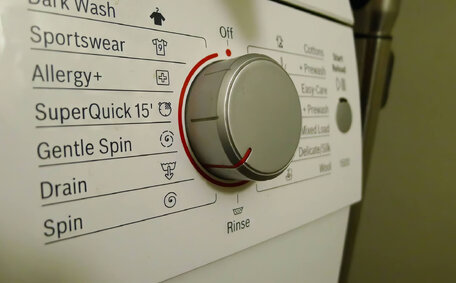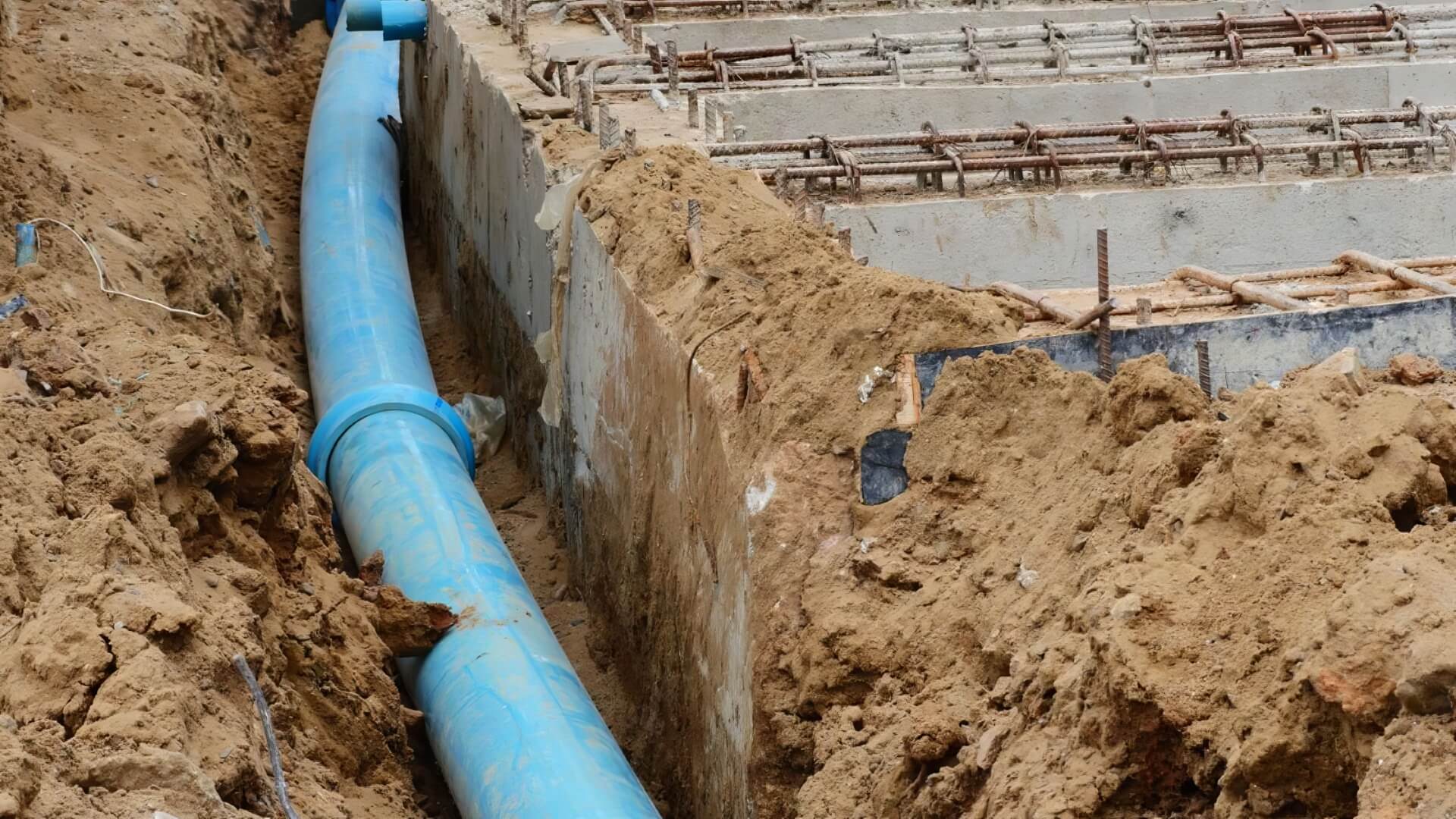Introduction: The Battle Against Sink Clogs
Addressing a blocked kitchen or bathroom sink can be quite a nuisance. St Marys Plumbing recognises the disruption that such plumbing issues bring to households in the St Marys region.
Our expertise allows us to highlight the distinct differences in kitchen and bathroom sink blockages, from their causes to remedies, assisting homeowners in effectively resolving these common issues.
While clogged sinks may seem trivial, they can rapidly snowball into bigger issues if left unchecked. Understanding how to flush the troubles out your sinks and maintain them can save you time, money and hassle.
Kitchen sinks contend with substances like fats, oils and grease that build up over time from food residues. Bathroom sinks wrestle particularly with hair and soap scum accumulations over time.
Throughout this article, we at St Marys Plumbing will leverage our extensive first-hand experience to walk you through the science behind sink clogs. You’ll find out how prevention methods and drain cleaning procedures are tailored to clear the unique clog causations found in kitchen and bathroom sinks.
Kitchen Sink Blockages
Kitchen sinks grapple with an onslaught of grease from food, soap residue, and other debris that can overburden the garbage disposal and lead to clogged drains. In fact, over 75% of all sink blocked incidents in the kitchen stem from fats, oils and grease alone.
These substances adhere to pipe walls and solidify, forming layers that reduce water flow and lead to blockages.
When this grease accumulation mixes with small food particles from food preparation and cleanup, it creates the perfect storm for a blocked kitchen sink going stubbornly silent.
Such blockages can be full or partial, leading to inefficient drainage and water pooling in the basin. A partial clog also causes gurgling sounds as water attempts to squeeze down sink channels through the narrowed drain opening.
Unresolved, a kitchen sink clog can result in backups that may damage cabinets and kitchen flooring. A fully blocked kitchen sink may result in standing water and the risk of sewage gas intrusion, which can be treated with a simple baking soda and vinegar mix.
The added weight of excess water is one of the most significant factors in damaging structural integrity, potentially leading to very costly water damage repairs.
One should also avoid disposing of fats, oils, and grease into sinks to prevent clogs. Instead, collect these substances in sealed containers and dispose of them with the regular household waste.
Common Causes of Kitchen Sink Clogs
There are three primary culprits behind the most common kitchen sink clogs: F.O.G., food scraps and soap scum.
Fats, Oils and Grease (F.O.G.) - F.O.G. accounts for a significant majority of kitchen sink clogs, with gradual build-up along pipe walls. As grease cools, it can stick adamantly to the inside of drain pipes.
Food Scraps - Small bits food particles like coffee grounds can get trapped in pipes along with F.O.G. deposits. Food debris and grease combine to obstruct the way clear for water in your drains.
Soap Scum - The minerals and fatty acids in liquid soap can react with substances like grease and hardened oils already coating drain pipes where water can struggle to penetrate. These reactions cause deposits to build up through and within the sink, resulting in more blockages.
Vigilant grease control measures, the proper use of sink strainers and limited pouring of oils or fats down drains can unclog sink blockages before they become a bigger problem.
Preventing Kitchen Sink Blockages
Using a natural drain cleaner for routine upkeep can effectively avert blockages in sink passageways.
Make use of sink strainers to intercept food particles and responsibly dispose of fats and oils to maintain clear drains. Allow no fat down the drain, let cooked oils cool and solidify before disposing of them in the garbage. Small preventative steps are crucial for keeping grease and fat out of your drains, staving off future clogs.
After the baking soda and vinegar treatment, follow with cold water to enhance its clog-clearing effectiveness. Discover how unblock sink issues can be tackled with the bubbling chemical reaction that helps dissolve grease and food buildup. Monthly use of a drain snake can help remove internal pipe debris, ensuring a clear water flow.
Implementing simple, low-cost measures such as using drain cleaners regularly is a way to prevent your kitchen sink from obstructions and to avoid damage to cabinetry due to leaks and overflows. Should your sink stubbornly refuse to drain after your attempts to clear it, make sure to call out your local St Marys Plumbing for professional drain assessments and clearing services.
Bathroom Sink Clogs
Bathroom sinks are prone to clogs commonly caused by hair and soap scum build-up. On average, hair tangling in pipes and sticky soap scum buildup, which can damage drain function, account for over 65% of all bathroom sink clogs.
Hair strands often cling to obstructions within the drainage pipe, which can lead to clogs. Soap scum - which contains materials like fats, oils and salts - sticks to hair strands and pipe walls.
Over months or years, this substance accumulation narrows pipes and impedes proper flow of water into your drains.
Small bathroom sink drain pipes are especially vulnerable to clogging because they lack the width for debris to easily pass through. A bathroom sink with a clogged drain will exhibit slowly draining water during use. Left ignored over an extended period, bathroom sink clogs can lead to more serious plumbing issues.
Prevention is the best medicine when it comes to avoiding bathroom sink clogs.
Also, regularly pour boiling water into sink drains to dissolve persistent soap scum.
What Typically Clogs Bathroom Sinks
There are two primary culprits behind most bathroom sink clogs: hair and soap scum.
Hair - As strands of hair wash down the drain, they can take hold on any small obstructions or rough edges inside the pipe. Hair makes up over 65% of bathroom sink clogs.
Soap Scum - The fatty acids and oils in soap products stick to pipe walls and hair strands. Over time, this sticky buildup accumulates and narrows pipes.
Unlike kitchen sink clogs caused by food waste and grease, bathroom sink obstructions stem from these sticky, tangling materials. Using hair catchers and avoiding the disposal of hair products down drains, combined with regular maintenance, ensure unimpeded drainage.
Preventing Bathroom Sink Clogs
Regular cleaning and maintenance are key to avoiding bathroom sink clogs. Install hair catchers or drain screens to trap hair before it enters the pipes. Keep your drains clog-free by not pouring hair products, oils, or thick liquids into them.
Roll up your sleeves and get your hands involved to keep bathroom sinks running smoothly; once a week, pour a kettle of just-boiled water down, followed by 1⁄2 cup baking soda and 1⁄2 cup vinegar. You can use the penetrating heat to dissolve soap scum while the chemical reaction breaks up debris. For deeper cleans to unclog bathroom pipes, you might even use a flexible coat hanger or garden hose to access pipe interiors and flush out built-up gunk.
Employing these simple, low-cost preventative measures will keep your bathroom sink without pipe worries and ensure a free water flow. Contact St Marys Plumbing right away if you notice a slow bathroom sink drain.
Unclogging Blocked Sinks
If simple preventative measures have failed and you’re faced with a blocked kitchen or bathroom sink, don’t despair - this DIY guide from the team at St Marys Plumbing will outline the tools you’ll need to foster freely flowing drains once again.
Assessing Sink Blockages
You’ll need to begin by showering 1⁄2 cup baking soda down the blocked sink drain, followed by 1⁄2 cup white vinegar. This reaction can tackle grease, soap scum, and other things, sending water down drain with a force that disrupts clogs. Wait 10 minutes and run hot tap water to flush debris like soap scum hair down pipes.
If water pools in your sink still, you can try using a plunger to exert pressure over the drain stopper, sealing tightly to forcefully dislodge the clog. Next, pour boiling water down the sink to soften and break down hair, soap scum, and other gunk before extracting it.
Seeking Professional Assistance
Call a plumber from St Marys Plumbing who will utilise a drain auger if DIY methods fail to clear the blocked sink drain. We utilise advanced techniques like hydro-jetting, mechanical drain augers and video pipe inspections to safely clear blockage in tough sink obstructions.
By accurately diagnosing issues, we open drains reliably while preventing pipe damage that can occur from excessive DIY snaking. With local experience spanning nearly a decade, don’t hesitate to call your St Marys Plumbing team for urgent assistance and preventative clogging advice.
DIY Methods for Unclogging Sinks
Before calling a professional, Several effective DIY methods are available for fixing stubborn blockages in both kitchen and bathroom sink drains.
Using a Plunger
Plunging creates suction to loosen and dislodge clog debris. Effectively unblock sinks by using a plunger with a rhythmic up-and-down motion over the drain opening for 10-15 times. Take care when repeating the plunging process not to scratch enamel surfaces.
Baking Soda and Vinegar
Combine these items - 1/2 cup baking soda with 1/2 cup vinegar - directly in the blocked drain line, then cover tightly to break up accumulations within the sink. The resulting chemical reaction can clean area of accumulations like hair, grease, and soap scum efficiently. Rinse with hot tap water.
Removing the P-Trap Manually
Employ pliers to loosen connections and carefully remove the P-trap beneath the basin to clear blockages.
Inspect for built-up debris and proceed to clean out the space thoroughly.
DIY techniques for unclogging drains can be cost-effective and save you time prior to seeking professional help. For persistent clogs, consider seeking the expertise and tools available at St Marys Plumbing to resolve your drain issues.
When to Call a Professional Plumber
Minor clogs in kitchen and bathroom sinks often clear with basic DIY methods, but for complex scenarios, a professional plumber is recommended for safe and effective resolution.
Contact St Marys Plumbing if the above methods don’t clarify the cause of your sink clogging:
- Multiple attempts using your toilet plunger, baking soda/vinegar or manual cleaning have failed
- Your kitchen or bathroom sink won’t drain water properly
- You have a severe overflow of water from sinks that is impacting walls or cabinetry
- DIY snaking efforts seem to push the clog further down pipes rather than clearing it
- There are pervasive sewage odours coming from blocked drains
- Your home has older galvanised steel drain pipes prone to rust and obstruction
Our qualified plumbers utilise powerful hydro jetting gear and sophisticated camera tech to precisely diagnose blocked sink drains. We can then employ targeted methods to restore proper water flow and ensure your plumbing vent functions optimally, all without damaging your overall plumbing system.
With competitive rates and emergency availability 24/7, St Marys Plumbing should be your first call for professional sink drain clearing services. Contact us at 1300 349 338 or jobs@stmarysplumbingservices.com.au.
Maintaining Healthy Pipes and Drains
Preventative measures are essential for maintaining clear, functional drains and plumbing. Inspect sinks monthly and pour a mix of boiling water, baking soda, and vinegar into each to ensure proper drainage. Invest in sink strainers, hair catchers, and pipe screens to prevent debris from entering your drainage system.
Book an annual maintenance service with us for a comprehensive cleaning of your plumbing system. Our technicians use hydro jetting, augering, and camera inspections to identify and address issues before they escalate. We also offer pipe relining, a strategic service deployed to get job done by reinforcing worn drain walls vulnerable to catching debris.
Responding quickly to minor issues can ward off expensive plumbing emergencies. Proactively maintain your kitchen and bathroom plumbing to keep it in optimal condition. St Marys Plumbing stands ready to partner with homeowners seeking expert drain and pipe care tailored to maximise longevity and minimise blockages.






